WarGods of Aegytus
Review: Wargods: mythological fun with violence
January 17, 2024 by labambaman
This Review Was Edited
Related Review Types
Supported by (Turn Off)
Supported by (Turn Off)
Wargods is one of those games that I think often gets overlooked, which is a shame because it's a pretty good game with a great premise. And in the world of 28mm rank n' flank games, I find myself most often drawn to this one in particular.
Wargods is made by Crocodile Games, and, technically, consists of three settings all using the same rules. You have Aegyptus, Olympus and the Wendigo of Hyperboria thus far in the game. Aegyptus was the first book to come out, featuring factions based on a handful of ancient Egyptian deities, the Wendgio followed (although we haven't gotten more stuff from Hyperboria yet) and then we got the newest book with Olympus giving us ancient Greek demigods and famous factions like Athens, Troy and the Amazons. Both the Aegyptus and Olympus books contain the same core rules, although the Olympus book introduces a few new things specific to those factions such as the phalanx and cavalry.
There are some subtle differences between how army construction works between the settings. Aegyptus factions, for example, have pretty laxed rules for allies (with some notable exceptions) and no restrictions on missile troops. Olympus has slightly stricter alliance rules, and only 25% of your points can be spent on missile troops like archers and peltasts (ancient Greeks, historically, found the idea of missile weapons cowardly so they didn't use them very much rather favoring the "manly" and "brave" option of the phalanx). Other differences are that Aegyptus forces and the Wendigo have more flexibility in outfitting their soldiers. They basically give you a profile and then you equip them however you see fit. Olympus factions usually have their guys come pre-equipped with some extra options to give them heavier armor or a hand weapon in addition to their spear. I like this, but it does make the Olympus factions feel perhaps a tad more restrictive. Then again, it fits considering the main method of combat in Olympus is phalanx pushes.
Warbands are centered around your leader. In Aegyptus this is your Harbinger, the Wendigo have their Ice Queens and the Olympians have their Demigods. Your warband leader can be equipped how you see fit (except some Olympian named characters who function as Demigods) and come with a variety of special abilities based on their faction allegiance. If two leaders meet in combat they start a battle to the death that nobody can interfere in, ending only once one has been felled. Your leader also determines how big your army can be and still function, as they can only control so many units in battle at a single time. This means if you exceed your command limit, some of your units will just stand there unable to do anything on a turn. So you don't want to build too big. Leaders have a special stat called Ka or Fate, which they use to use certain abilities they have but also factors into their ability to command. A leader with high Ka/Fate can lead more troops into battle while also being able to use more abilities to help turn the tide in their favor.
Once your leader is set up they need followers, the warriors and specialists that escort them into battle. Each unit of warriors that are part of the same faction as your leader grants you two characters you can take. These range from unit champions to priests to spellcasters. Allied units grant you one character from that unit's faction, which allows you to mix in some stuff to change up strategies pretty easily. I'm quite fond of this as it means you can fill in and compensate, to a degree, some weaknesses of certain armies. For example: the Aegyptus faction of the Tethru, the children of the god Toth, sport pretty low combat values and aren't really great front line soldiers. To mitigate this you can ally in a unit of Heru, the children of Horus, warriors to make up for some of that as they're some of the best melee fighters in the game. This really lets players mix it up, and means if you have two armies you can swap stuff around pretty easily.
Now that you've got your warband all built and ready to fight, it's time to start. Wargods uses a command counter system, and each unit on the table is assigned a command counter at the start of the turn determining what they will do that turn. This is both a great system, and a flawed system. I love the pre-planning it requires and trying to outsmart your opponent with bluffing, but there are a lot of different commands, and how they work depends on if it's assigned to a unit, character or chariot. It can be a lot to keep track of, which makes it a little daunting at first (it's six full pages just going over what the orders are and how they work). Then the players make an initiative roll, rolling a d10 (the game is all d10's, thankfully) and adding the leader's command value (their Discipline stat plus their Ka/Fate value) with the highest roll winning. And this is where Wargods gets really interesting to me.
The winner gets what's called the Edge, and based on the difference in the initiative rolls they get a better Edge over their opponent. Having the Edge doesn't just mean you pick who activates first, but having the Edge gives you the potential to activate extra units. Unit activation is one of the more interesting concepts in this game, and one of the places I find it really shines over some other rank n' flank games. It uses alternating activations, and when it's your turn to activate a unit you can activate one of your units, or choose an enemy unit to try and force your opponent's hand. If you think your opponent is setting up to a take a charge you can force that unit to activate and reveal their command counter, thus nullifying certain orders like Set For Charge that would allow them to interrupt your attacks. It's six kinds of brilliant and I'm surprised I've not really seen this in other games. It adds another layer of planning and plotting to the game that really brings it to life. Sometimes you want your own units to go first, get off a vital spell or hail of arrows or move a unit out of the way of a potential charge. Sometimes you want to force your opponent to go first, predicting their moves and making them move before their ready. It works wonderfully and is such a unique element.
Combat in Wargods is pretty straight forward. There's a table for resolving melee combats, and I'm normally not a huge fan of this type of thing but it's the only one so I'm willing to let it slide. You take the Attack value of the attacking model(s) and the Defense value of the defending model(s) and compare on the chart. This will tell the attacker the minimum they need to roll on a d10 to score a hit. The game also gives you the formula used, which is pretty easy if you don't want to have to keep checking the table (6 + attack value - defense value). If you hit the defending model takes an armor save or takes a wound. Armor saves are a roll under, which feels a little odd the switching back and forth, but not so odd that it breaks my brain. Armor values can be reduced by weapons with higher Damage Modifiers, and some armor provide a Hard save which can't be reduced as to always provide your guys some level of protection.
Shooting works pretty similarly, but the formula to hit is slightly different. This time it's 6 + range modifier (short, medium or long) - ranged value. It maybe would have been nice if the table that they tout as being the Universal Table of Results was used here as well, but the defense score of the unit being shot shouldn't really factor in so I get it. And just like melee, roll to hit and any hits trigger an armor save. One thing I really like about ranged combat in this game is that the front two ranks of any unit armed with ranged weapons can fire during a ranged attack order. It always bugged me when it was just the front rank of guys shooting in other games, so the fact the game actively acknowledges that the front rank kneel down to give the guys behind them a clear line of sight is great.
There are also various special rules for things like chariots, cavalry, flying units and the likes that I'm not really going to get in to here. Chariots are a pretty big factor, and their rules mostly cover how the chariot fights and moves and special attacks it can do (like passing attacks). There are also special rules for certain weapons, but I don't feel like it's overly complex. It can just be a bit of stuff to keep track of, and after a game or two you'll remember how the weapons your guys use often work.
The one thing that took me by surprise when I first got my hands on the Aegyptus book is that Wargods features a campaign system! Since the scale is generally smaller than most rank n' flank games by virtue of being centered around the personal warband of a dude rather than a massive army this campaign system really works quite well. After battles your leader can gain Ka/Fate and new abilities. Characters may get serious injuries that change their stats in battle, you gain points to purchase new recruits with and your leader can level up to get to roll to get more units. It's all really quite well implemented, even if the section of the book isn't super well laid out. I'm a sucker for a campaign system, so this was a welcome surprise to me.
Speaking of the books, for a moment, they are beautiful. Well made, full of gorgeous art, lore, lots of photos of models and contain the full rules and all unit stats for their respective setting. The Wendigo get a smaller booklet just covering their army list, so you'll need one of the other books to actually have the rules and equipment costs and so forth. I assume we'll see a Hyperboria book at some point as they've hinted at other people being up there, but who knows.
I will say one place that Wargods lacks is the model department. The models we do have are great. They have all the necessary detail, are mostly single piece models so they rank up properly and they look great. I know some people will bemoan them being metal, but I don't mind metal as much as others. The bigger models are usually resin, with the exception being the Titan Overlord who really needs to be resin because you need one to play a Titan army (he's the leader) and the model is $100!
Where they lack is options in some cases. A lot of the Aegyptus factions are missing loadouts for their warriors. While you can skirt around this with allies, it'd be nice to not have to. It'd be nice if we had models for the various general weapon load outs for each race, and I really think if Crocodile Games wants to do more Kickstarters then filling in the gaps should be their next one. Yes those inclined to do so can probably do some pretty easy conversions to swap weapons on certain models, but others are just entirely out of the realm of possibility given the way the models are posed. For Olympus there are several character models missing, only Troy and Sparta have dedicated chariot models as well as being the only factions with Shrines available so far despite that being something every faction can take. I know Crocodile Games is a small company, and they hand sculpt every miniatures they produce, but some of the gaps in the line are just hard to swallow. Some things can be proxied, like the Athenian Thaumaturge and Philosopher and a handful of the mythical creatures, but it would just be nice to see the lines filled out a little more. As much as I'm excited for the next setting book, whenever that may happen, it'd be nice to fill some of the gaps for the existing forces.
Overall, though, I think Wargods is a great game. It scratches that rank n' flank itch without going overboard and becoming cumbersome in size, has a really solid ruleset and I'm a sucker for mythology so it scores points there as well. It has it's flaws, but they aren't severe enough to make this a game to avoid. Just know going in that new releases are sort of a slow trickle. I highly recommend this to fans of ancient mythology who want a game that won't require an entire room to store a single army.































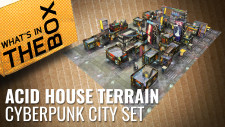
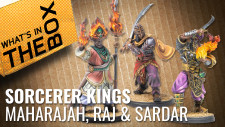
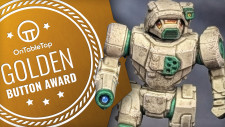
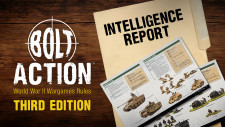

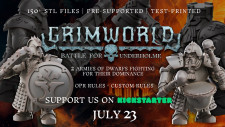








Leave a Reply